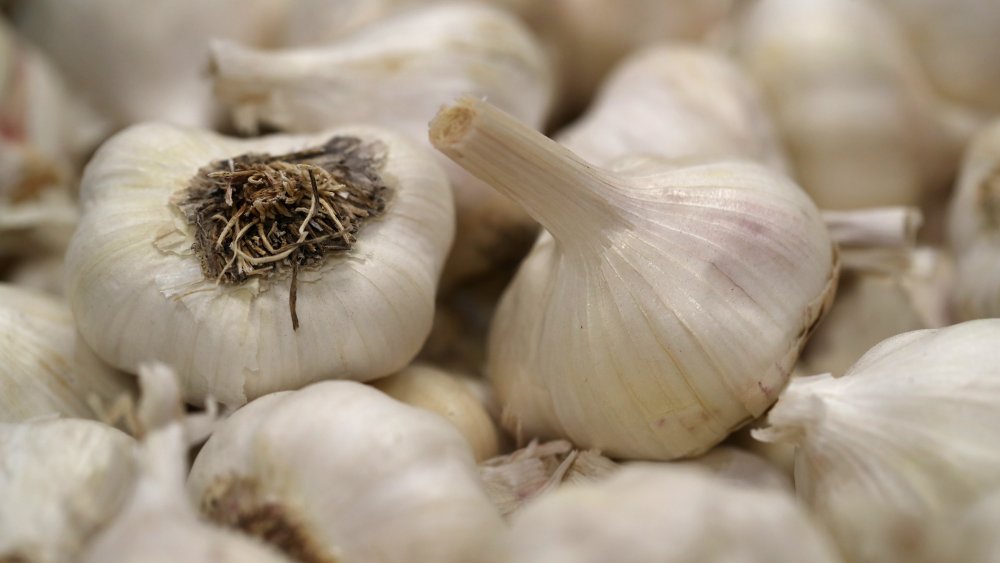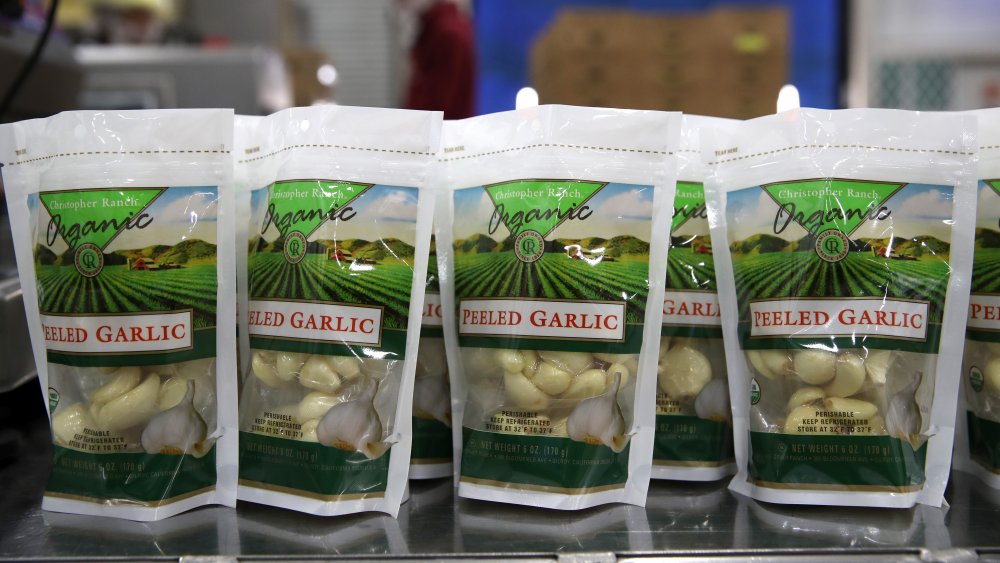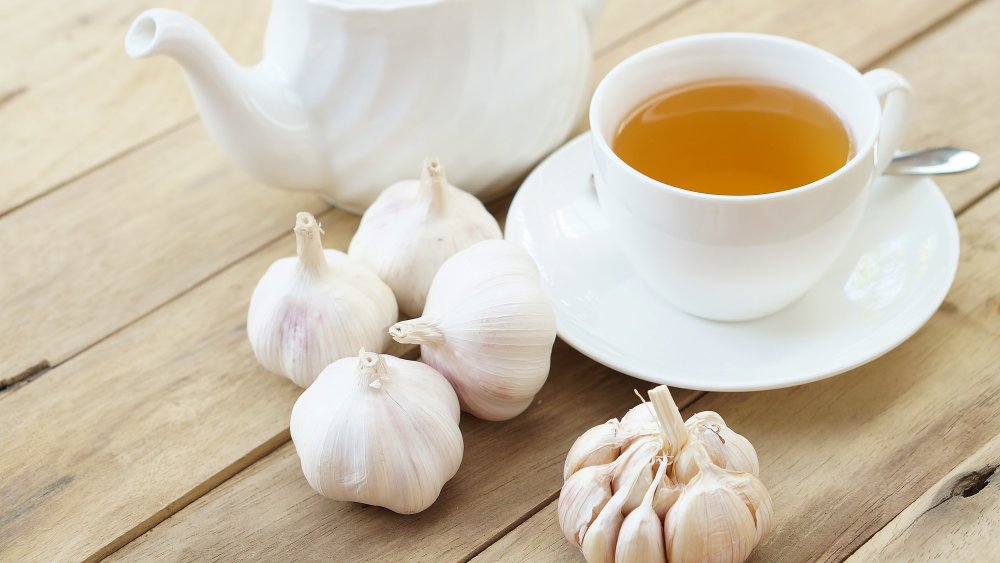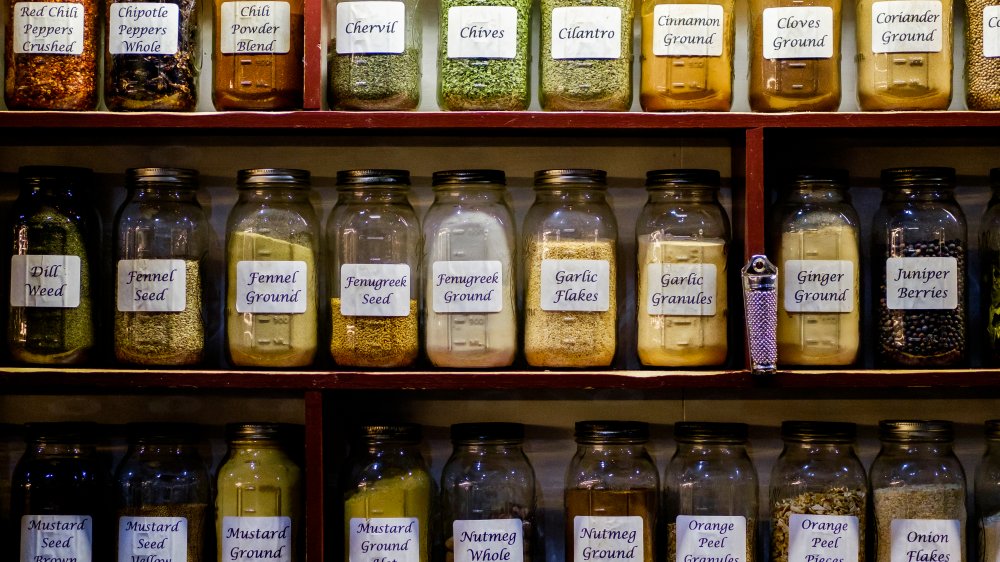This Is Why You Can't Buy Garlic Right Now
If you've been in the mood for marinara lately, or a nice homemade pizza sauce, you may have been in for a disappointment when you went to the grocery store to pick up ingredients. Chances are, you may have been unable to find any fresh garlic. By now we're all used to shortages of one thing and another due to the COVID-19 pandemic followed by a few months of self-quarantining. First it was hand sanitizer and toilet paper in short supply, then yeast, carbonated beverages, frozen pizza, and finally even Wendy's was left saying "Where's the beef?" due to some serious hitches in the nation's meat supply.
Now it looks like shortages are beginning to hit the fresh produce section as well — mushroom growers had to scale back their production when orders fell due to restaurant closures, and now they're once again scrambling to fill demand. With garlic, however, there are several different reasons behind its current scarcity.
Why is garlic so hard to come by?
While garlic experienced the same decline in orders due to restaurant closures, this was more than compensated for by the huge surge in demand by home cooks, which was just about everybody in the U.S. after their first few GrubHub orders were made and the thrill of paying ridiculous delivery fees wore off. Garlic is such a kitchen staple, many of us can't imagine having to cook without it. And yet, we're having to do just that now. Ken Christopher, executive vice president of Gilroy, California garlic producer Christopher Ranch, spoke about the sudden surge in demand for his product — even without the restaurant orders, they went from selling 500,000 pounds a week to over 800,000. He told The Mercury News, "There was a huge run on grocery stores all over the nation. Demand for California garlic, really for all garlic, is still surging."
It seems the stinking rose was already in short supply even before the buying boom, though, with last year's heavy rains having left many bulbs in poor condition. What's more, as The Wall Street Journal points out (via SFGate), China produces about 80 percent of the world's garlic, and needless to say, the outbreak of COVID-19 there had a significant impact on the supply chain. As of February, the shortage in Chinese-grown garlic had already driven prices up by 29 percent, and one U.S.-based garlic grower told the WSJ that he expected prices to keep rising over the summer.
Garlic is also in demand due to its health benefits
One more reason why garlic sales have been booming is because of it being perceived as an extremely healthy food. Google searches for "health benefits of garlic" started spiking as soon as shelter-at-home orders went into place, and NewsHub indicates that this may be a trend worldwide, as New Zealanders also started stocking up on garlic and other healthy foods once the pandemic hit their shores.
What's more, there's also been a pervasive myth that consuming a great deal of garlic will help your body to ward off coronavirus — sadly, that's only true of vampires, not COVID-19. Although garlic is very nutritious, offering high levels of fiber, magnesium, and Vitamins B6 and C and having certain immune-boosting properties, it's no pandemic panacea. As UC Berkeley epidemiologist Arthur Reingold told The Mercury News, "I eat a lot of garlic myself, but I don't expect it to protect me from infectious disease."
So what can we do about the garlic shortage?
So, pretty much same old, same old, huh? Another staple product that's hard to get, and costs way more than it used to. Do we just learn to do without, or suck it up and hunt it down and pay whatever it costs? Or perhaps we can all use this shortage (as with all of the other shortages) as the opportunity to get creative and see what workarounds we can come up with. When it comes to substitutes for fresh garlic, the typical ones are garlic powder or granulated garlic, although each of these will require some recipe tweaking in regard to amounts since they tend to have a more concentrated flavor. Shallots are a slightly more out of the box substitute, although they're in the same general family as garlic. Onions could even be used for a different, yet equally pungent, taste –- if you've been missing garlic bread, why not try onion bread instead? Yes, the garlic shortage is a pain in the neck (as was Dracula, who'd surely have been thrilled by its current scarcity), but look at it as a challenge you can overcome by enlisting a little help from the rest of your spice cabinet.



